Affiliate links on Android Authority may earn us a commission. Learn more.
Ultrawide monitors are overrated, here's why I use a 4K TV instead
October 12, 2022

Optimizing for maximum productivity was my number one goal when I decided to redo my home office earlier this year. Like any self-respecting techie, it was clear that a large-screen monitor was going to be the centerpiece of my desk setup. My requirements were straightforward: plenty of screen real estate to work with, decent color accuracy, and aesthetics. And so began a long journey of researching some of the best ultrawide monitors around, since every internet guru says that’s the way to go.
As the headline makes clear, I ended up making a hard pivot towards a 4K television instead. Here’s why.
Different strokes for different folks
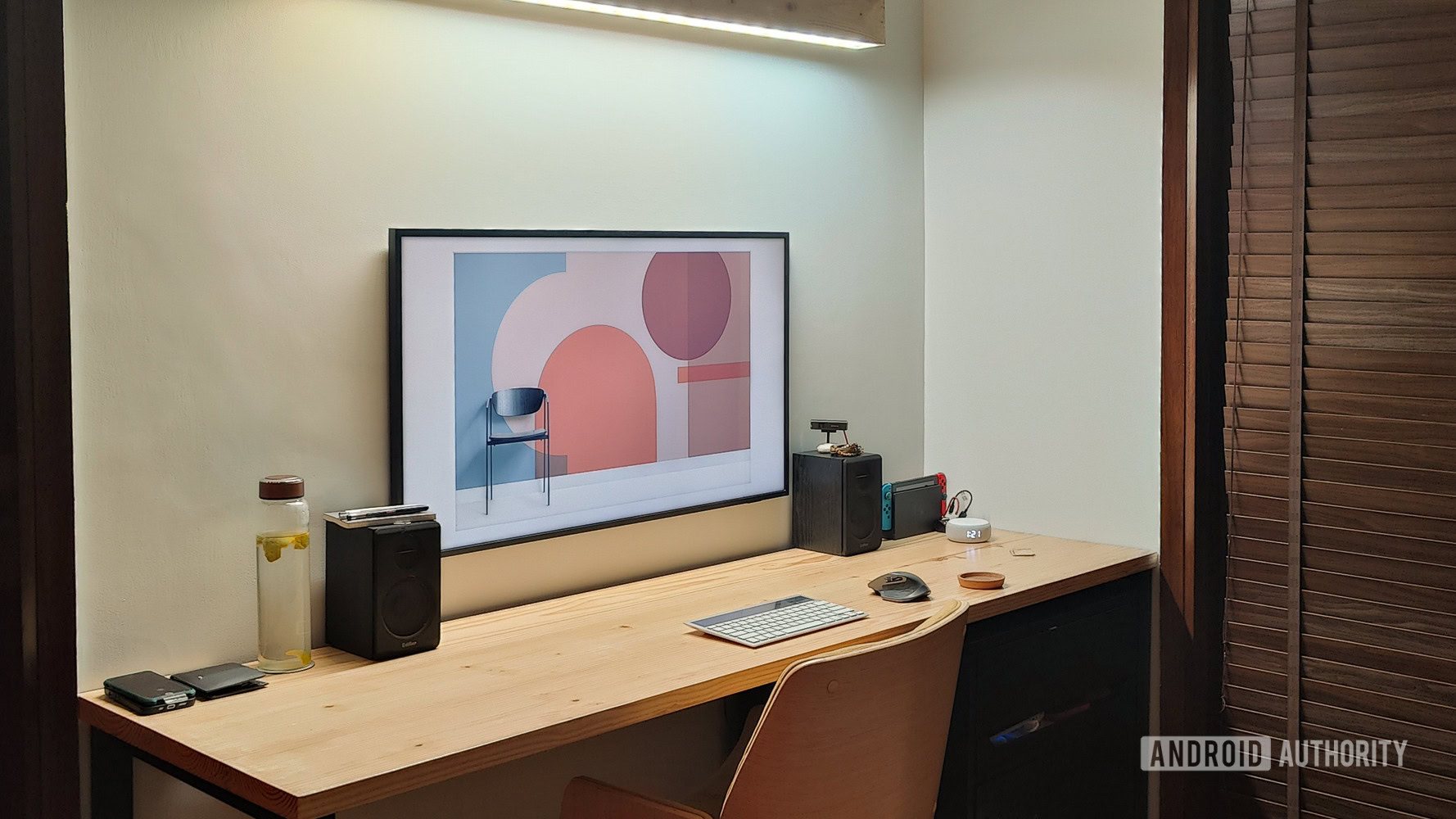
Right off the bat, understanding how you use your computer is key. Gamers might want a gaming monitor with ultra-fast refresh rates, movie enthusiasts might need the crazy 21:9 aspect ratios some monitors afford. But what I wanted was a huge canvas for multitasking.
Related: Don’t buy a gaming monitor unless you really, truly need one
I’m not a PC gamer. My use case centers entirely around consuming copious amounts of content, research, and writing. On any given day, I’ll have well over 40 tabs open, Spotify and Slack in the background, and perhaps a few terminal tabs for any tinkering I might be doing.
An ultrawide monitor is a good fit for most of those tasks but isn’t the ideal solution. Sure, the ultrawide aspect ratio allows you to open things, well, wide, but most websites aren’t designed with extensive horizontal views in mind.
A larger 4K display is almost as good as two ultrawide monitors mounted above each other.
A large screen 4K monitor, on the other hand, gives you similar levels of horizontal viewing space but significantly more vertical viewing space as well. It almost amounts to having an additional ultrawide monitor on top. That additional vertical viewing space is what really got me excited about the prospect of using a 4K TV as a monitor.
My monitor of choice
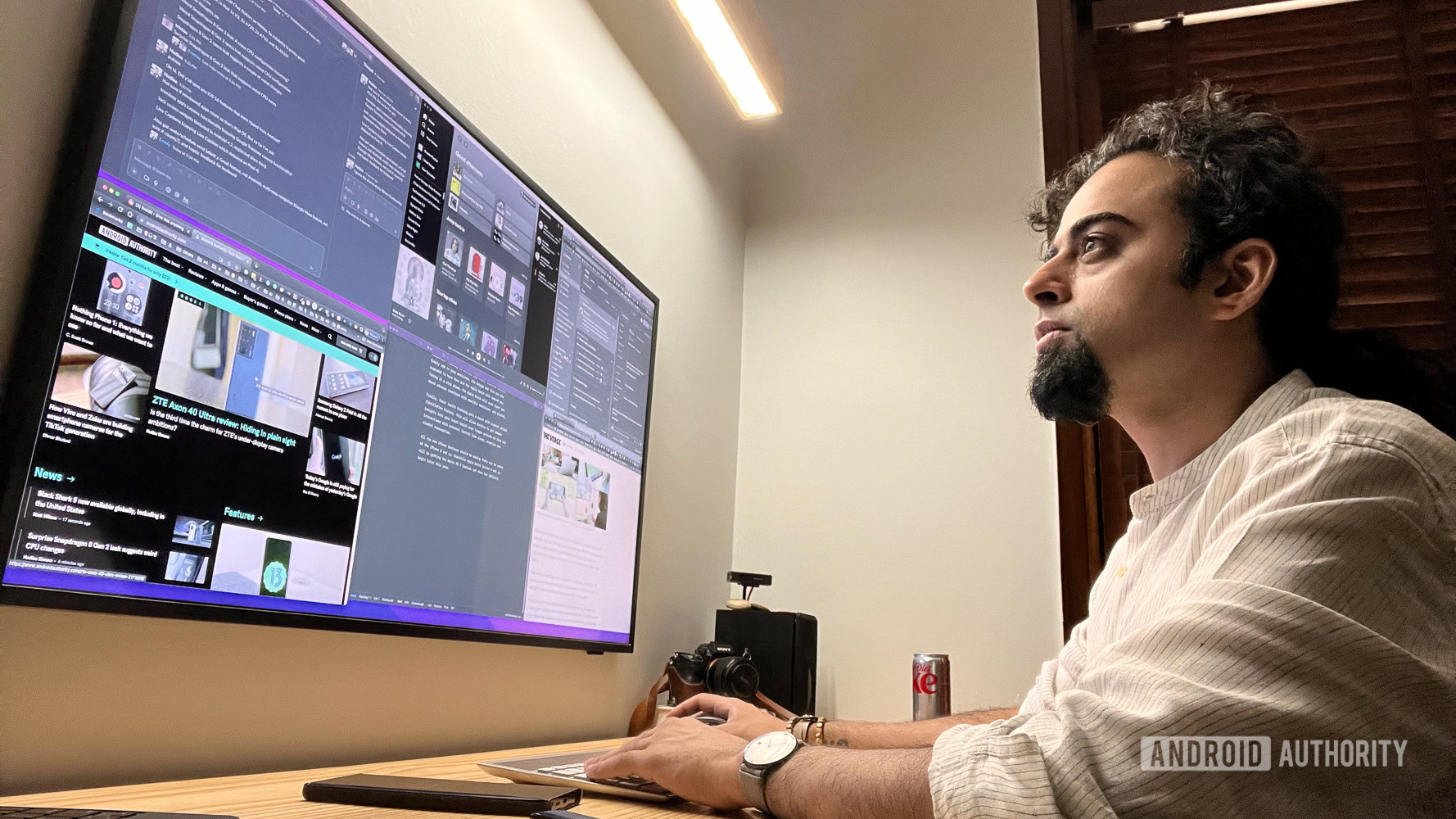
My “monitor” of choice ended up being a 43-inch Samsung Frame TV that I picked up for around $700 in India. The clean aesthetics and zero-gap wall mount were high up on the list of factors that aided my decision. You see, I did not want to clutter my desk with multiple monitors. In fact, I wanted to forego a monitor arm as well to maximize my desk space.
The Samsung Frame TV barely takes up any desk space, which was a prime consideration for me when designing my office space.
Mounted to the wall, the Samsung Frame TV barely sticks out an inch and doesn’t intrude on my limited desk space. I also end up setting it to the built-in art mode to shuffle through artwork when I’m reading a book on the lounge chair behind me, or just spinning some records. It helps reduce the work desk aesthetic and makes the room feel a bit cozier. If aesthetics are not a prime consideration for you, you could, of course, get a similar quality panel for a lower price.
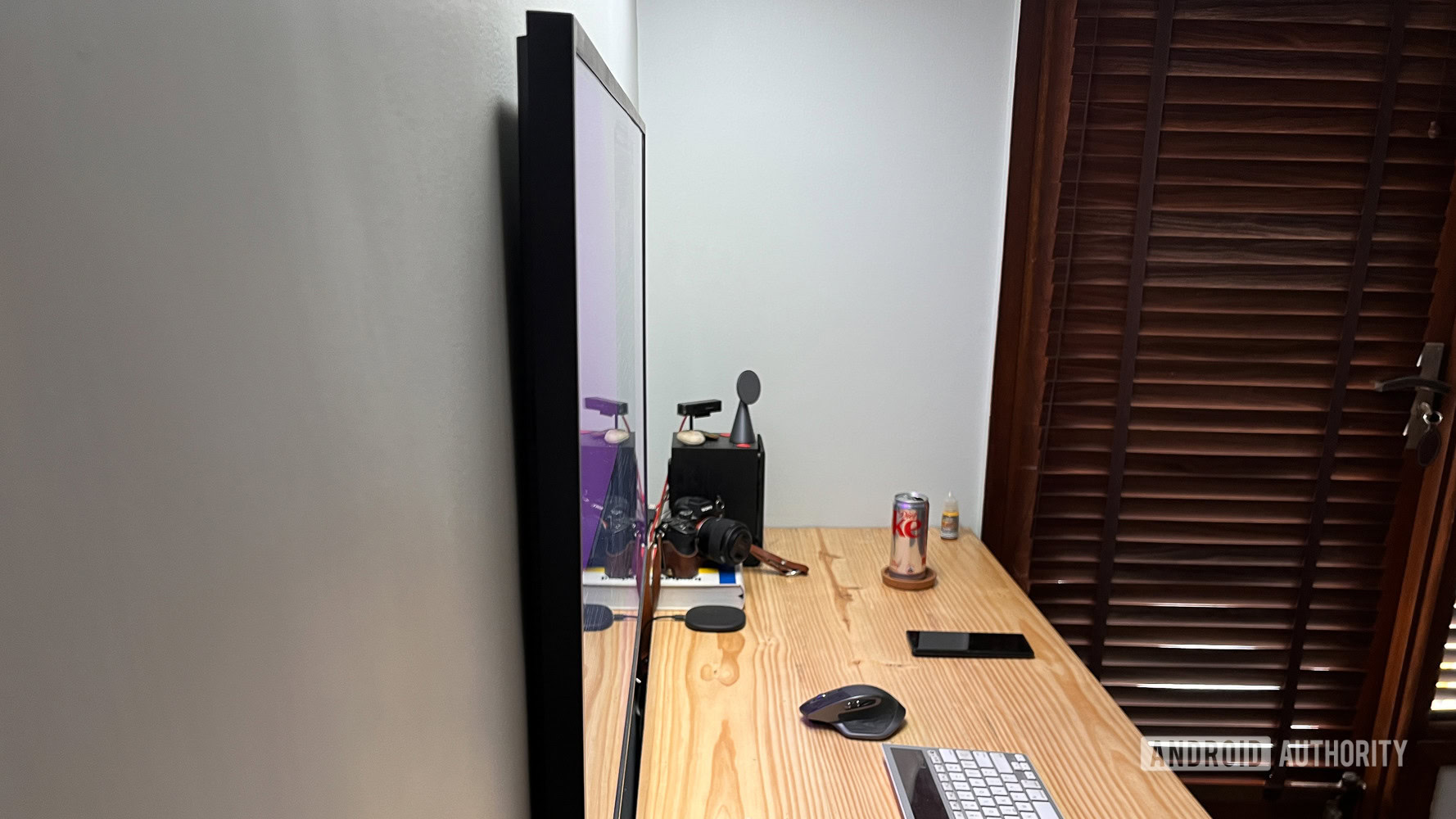
While the Samsung Frame TV certainly doesn’t have the best-looking panel in Samsung’s portfolio, let alone the broader lineup of monitors and televisions on the market, once color calibrated, it looks good enough to me and more than suffices for my photo editing needs. It also lacks high-end features like a 120Hz or higher refresh rate, but once again, that wasn’t a prime consideration for me.
It’s all about productivity
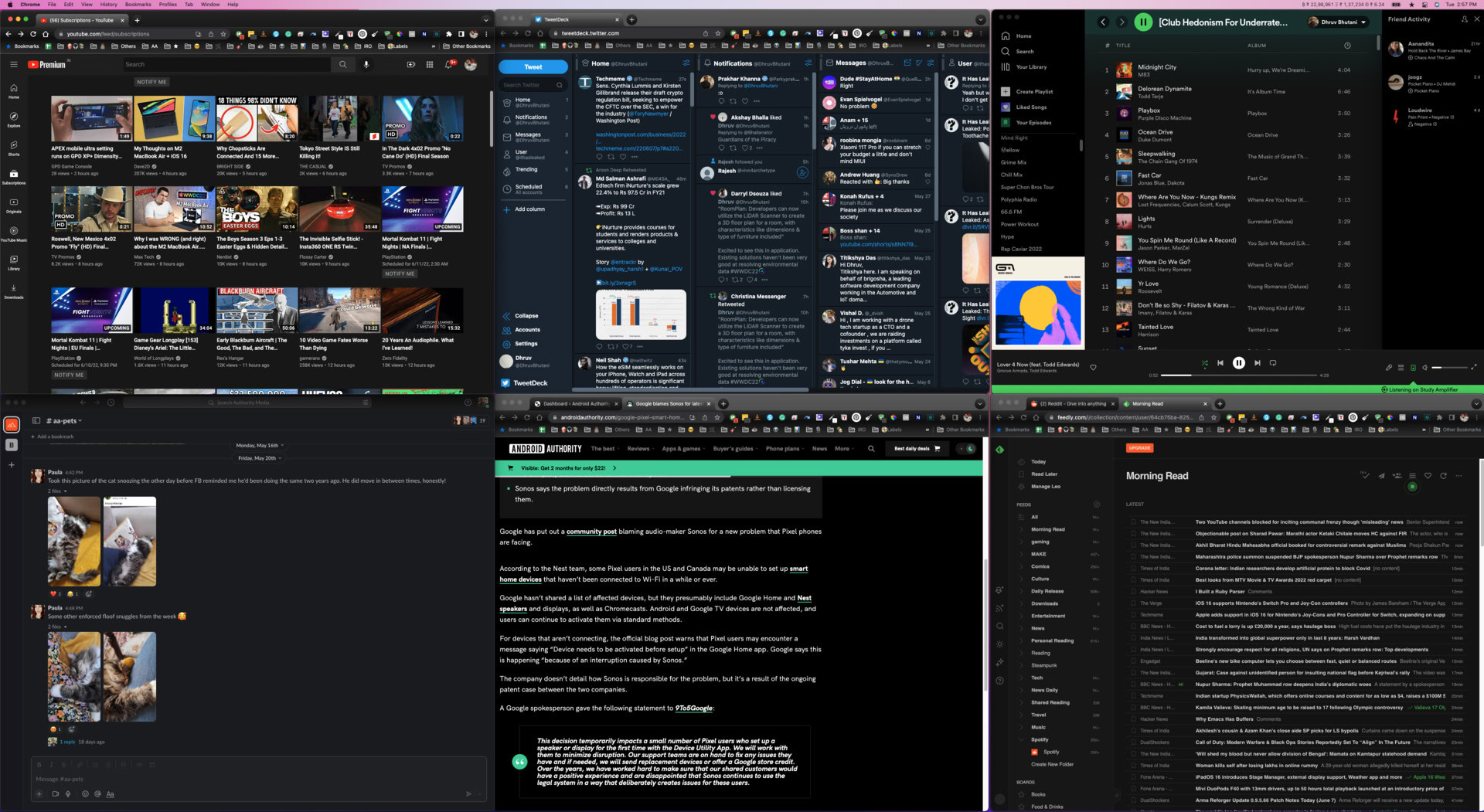
My day-to-day use, as I’ve already mentioned, involves dozens of tabs and windows. The default window management in macOS, however, is borderline useless. I make use of an app called BetterSnapTool to tame how apps behave in various zones of my monitor.
My daily configuration varies between five to six windows open simultaneously. With a grid of six windows open, I effectively get six 17-inch monitors on display. Now, this might sound very small in today’s day and age, but it works perfectly well for glancing at reference information, Spotify playlists, or office chats.
When reading longer articles, I switch to an alternate configuration where the window spans the full height of the 43-inch display and effectively gives me the equivalent of a side-mounted 24-inch monitor.
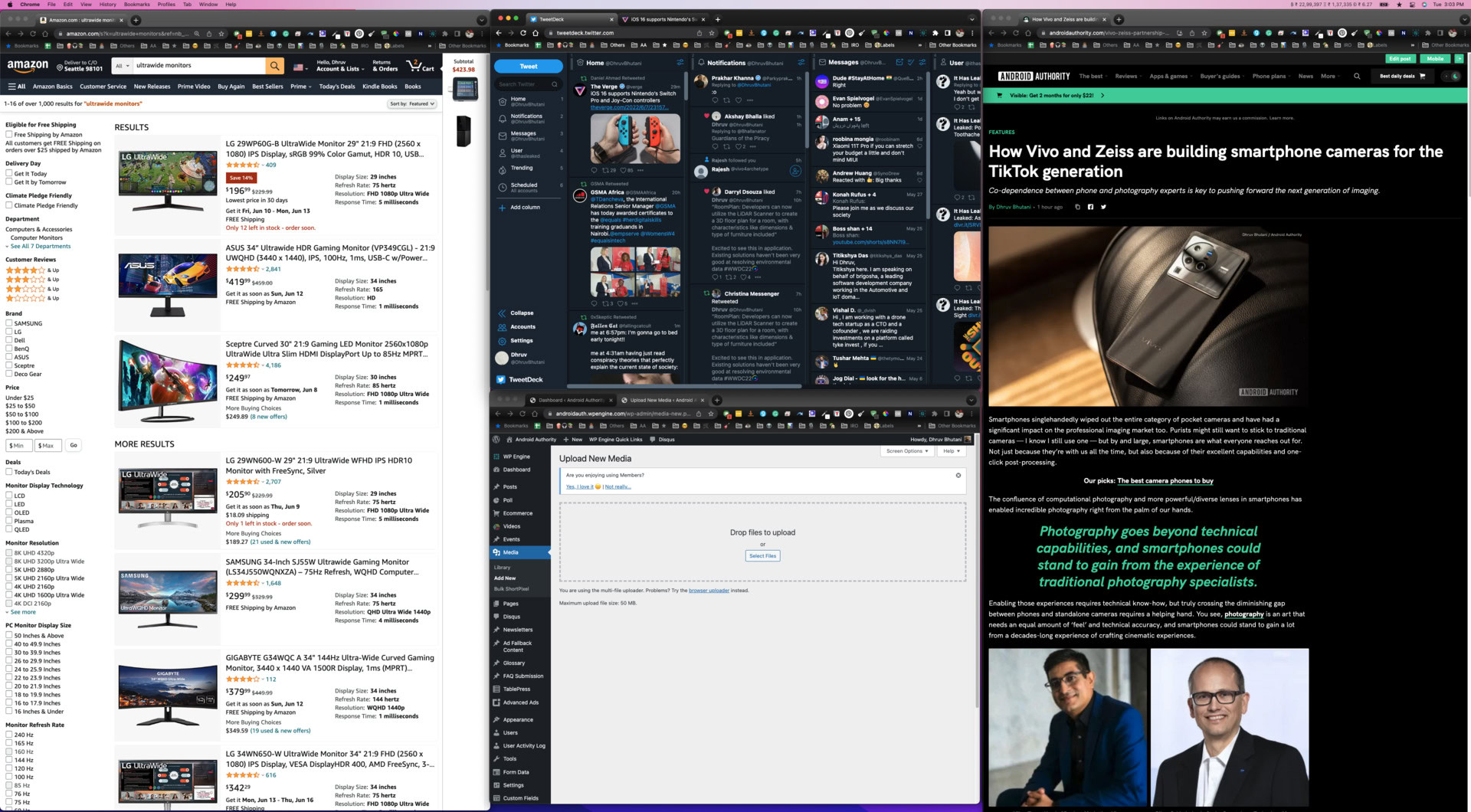
Being a fully virtual space, you can, of course, mix and match screen sizes to your heart’s content till you find the most appropriate setting for your use. In fact, as I’ve discovered after a few months of use, a large monitor like this is best used if you are looking for multitasking nirvana. Most apps or websites simply do not scale well to such a large size.
Also read: I bought an ultrawide monitor for productivity, and here’s what I learned
My colleague Bogdan recently wrote about his journey with an ultrawide monitor. I echo his statement that an ultrawide monitor only makes sense if you have a very specific use case. Unless you are working with tools that can span the width of the monitor, all that horizontal space will often go waste. Using a 4K television instead grants you double the height as well to effectively double the space you have to work with.
There are several other advantages to using a television as a monitor. Price, for one, was a big consideration. Yes, I splurged almost $700 on the Frame TV for the aesthetics, but you don’t have to. 4K television prices have never been lower, and it is possible to get a very good-looking television for just a few hundred dollars. In most cases, you will have to spend a significantly higher amount for a high-quality 4K ultrawide monitor.
Additionally, the television also comfortably doubles up as a, well, television when I want some downtime and wish to catch up on some YouTube videos or documentaries.
Moreover, I’ve found myself making use of built-in niceties like Airplay support for beaming my iPad’s screen over to the TV or smart assistant support for controlling the lights in the room.
The television disadvantage
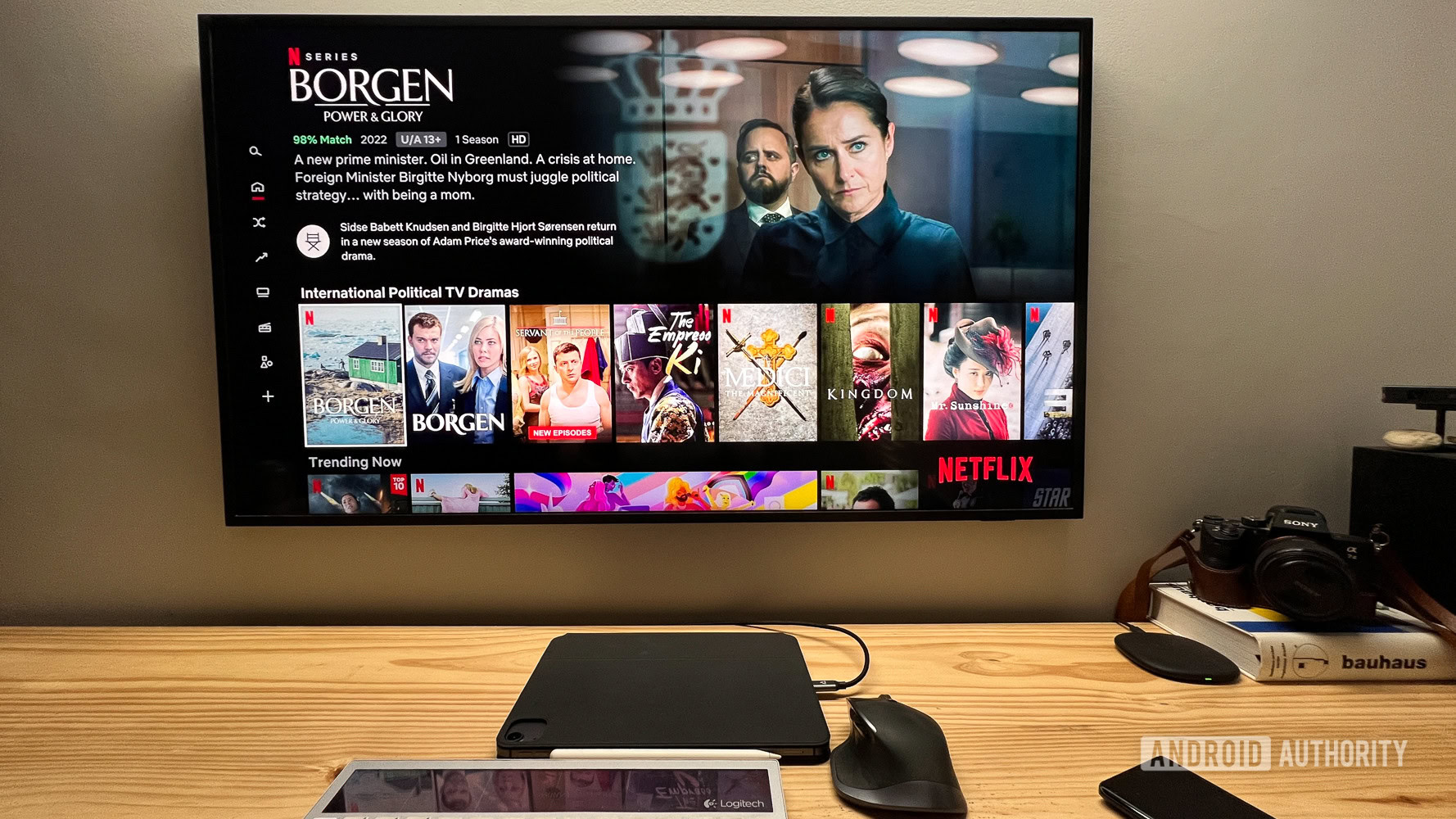
Using a TV as a monitor does come with its downsides. Primary among those is the lack of support for modern conveniences like USB-C. The simplicity of using a single cable for video output and charging can’t be overstated, and my setup means that I’m still stuck in dongle hell. My old OWC dock doesn’t support 60Hz over 4K, so my only option is to either use two cables or invest in an expensive dock.
You'll have to get creative with mounting a webcam on a display this large.
Built-in web cameras are also out of the picture. I’ve never been too big on video calls but the pandemic reinforced the importance of those. I find myself in several briefings or work calls and having the webcam switched on helps a lot with catching onto visual cues. The television, predictably, does not come with a built-in webcam. Additionally, when using a display as large as this, you will have to get a bit creative with positioning an external web camera. I discovered that mounting the camera to the top of the display mostly just focused on the top of my head, and I’ve since placed the camera over to the side on top of my studio monitor.
Is it worth using a 4K television as a monitor?
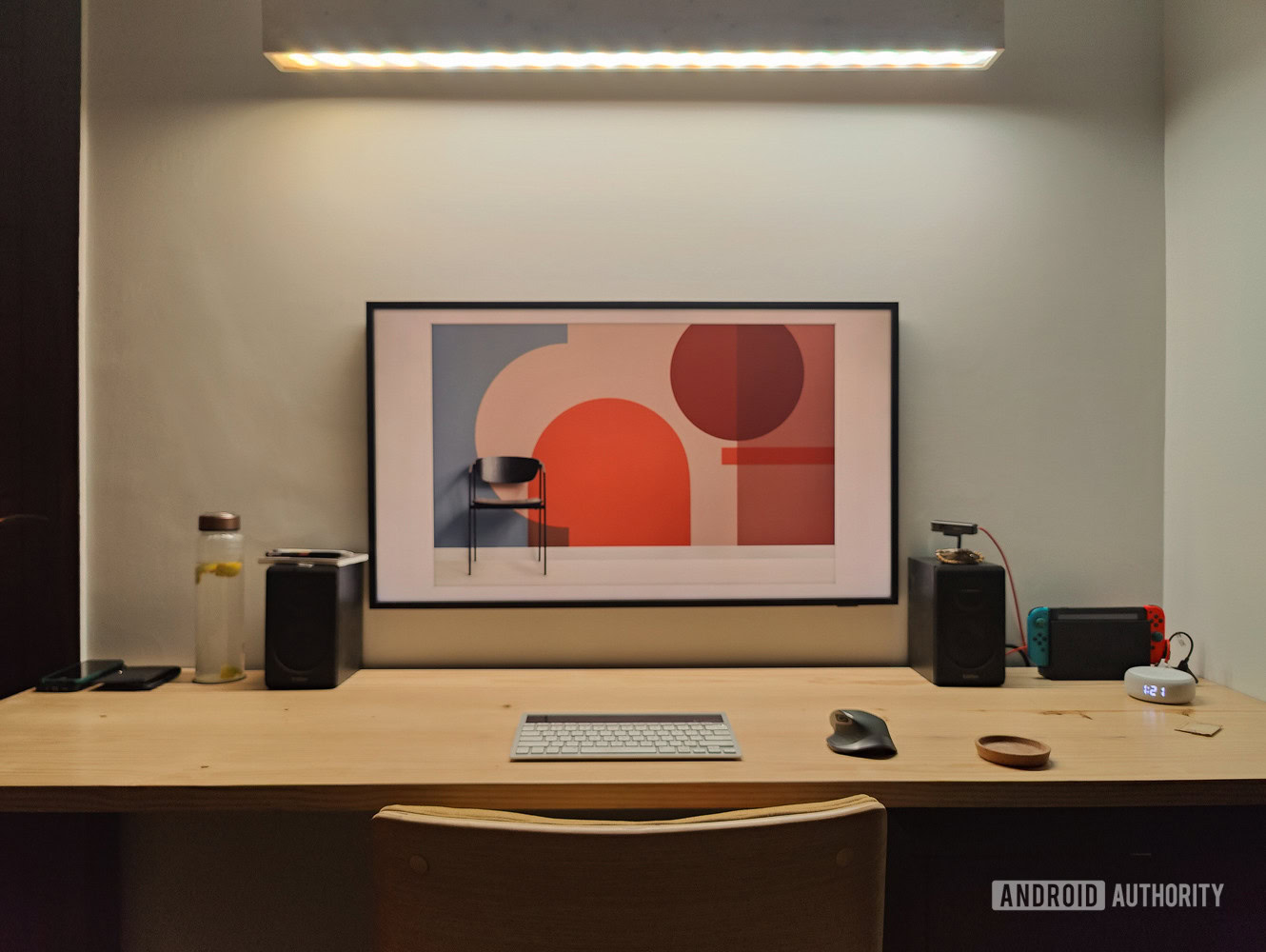
I’ve spent the last couple of months with the Samsung Frame TV hooked up to my Macbook and I can’t say I’ve found myself regretting my purchase. The expansive screen real estate has been a dream for catching live streams while chatting with colleagues. Moreover, the ability to snap six or more windows comfortably has been a game changer for my personal use case.
The huge screen real estate has had a tangible increase in my productivity and I can't see myself going back to a smaller display.
I was initially skeptical of having a short two-foot viewing distance between myself and the display, but that has not really been an issue. Despite that, I don’t think it is the perfect match for everyone. Lacking high-end features like a 120Hz refresh rate or an ultrawide aspect ratio makes it a non-starter for gamers. Users with less intensive workflows might also find it a bit overwhelming to work around the scaling issues of such a large display.
For me, however, I just can’t see myself going back to a smaller or ultrawide display. The sheer flexibility of being able to arrange windows just the way I like for more information density or additional context makes it the obvious choice.
Are you using a 4K television as a monitor? How has your experience been? Let us know in the comments section.